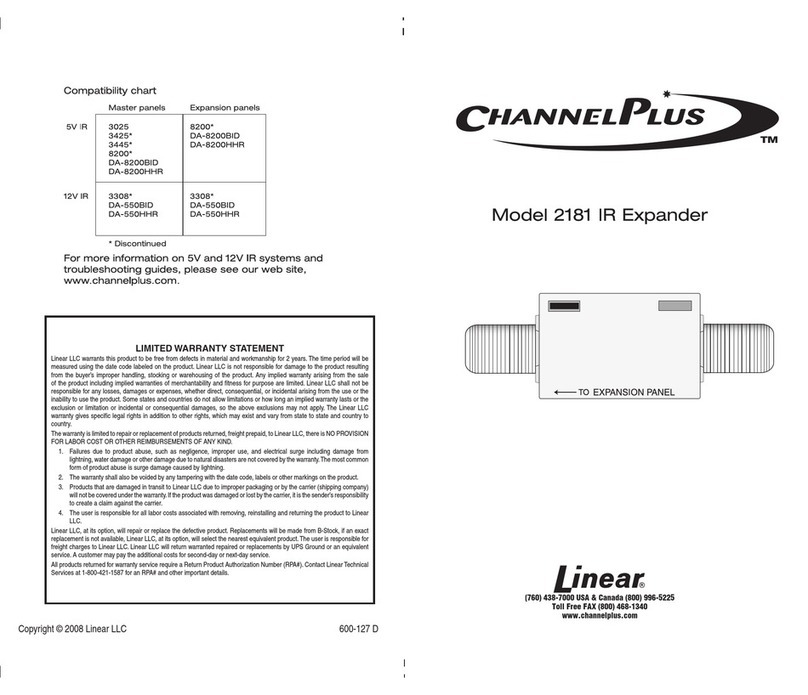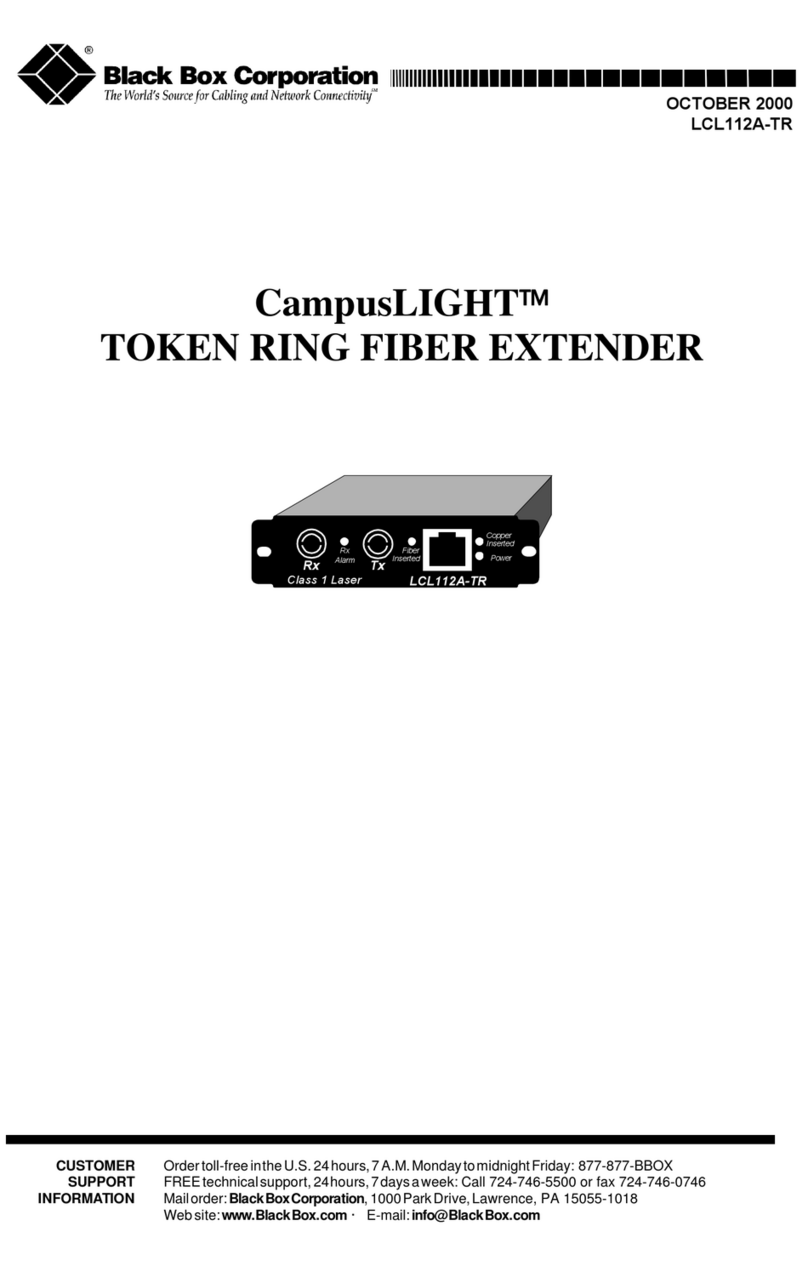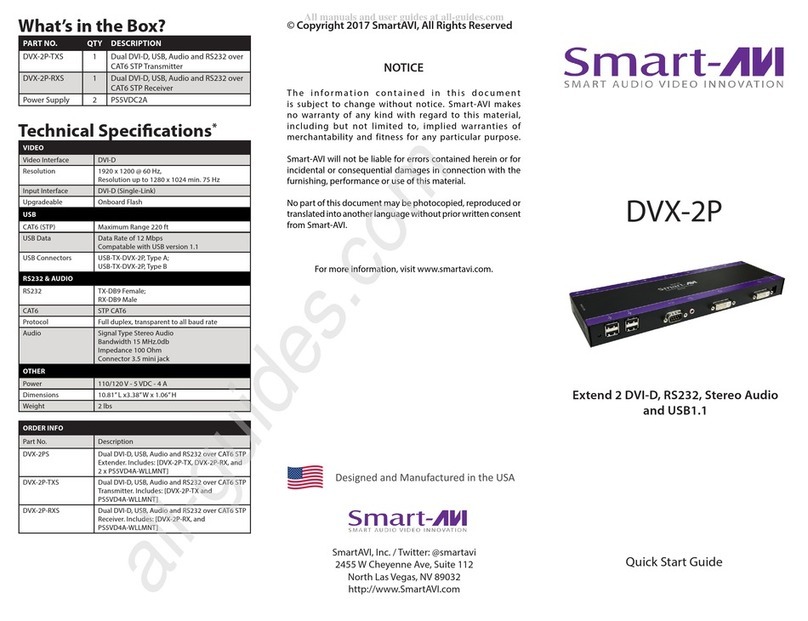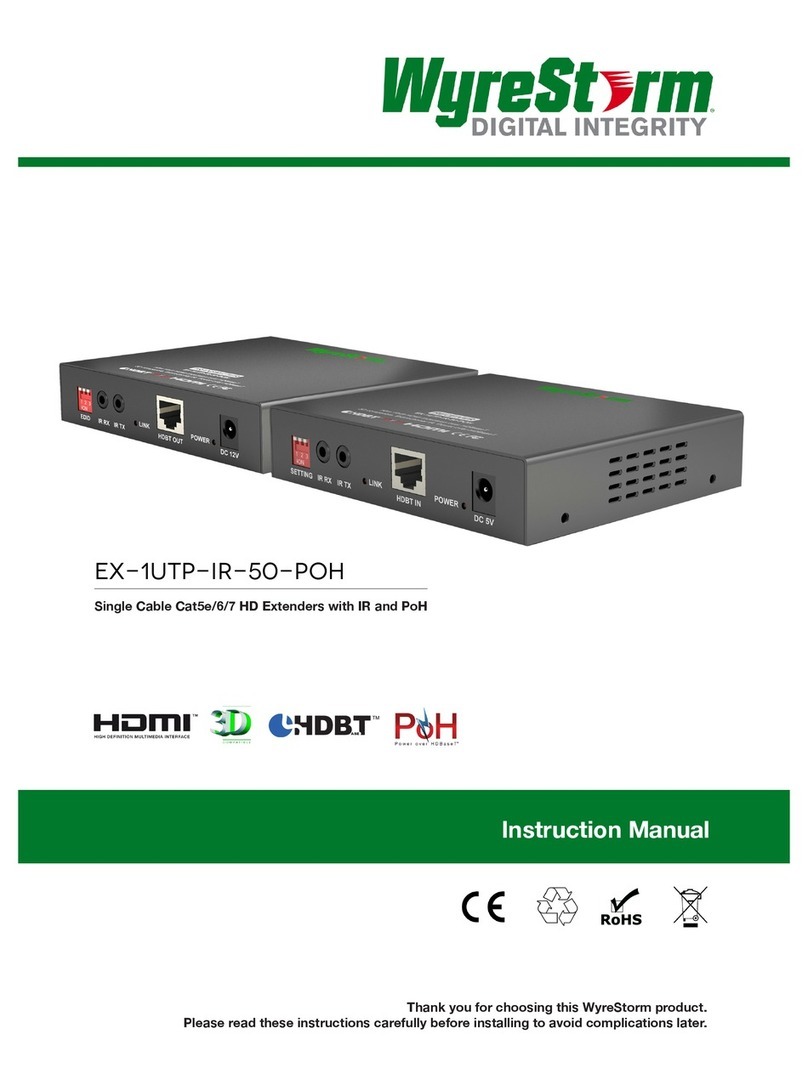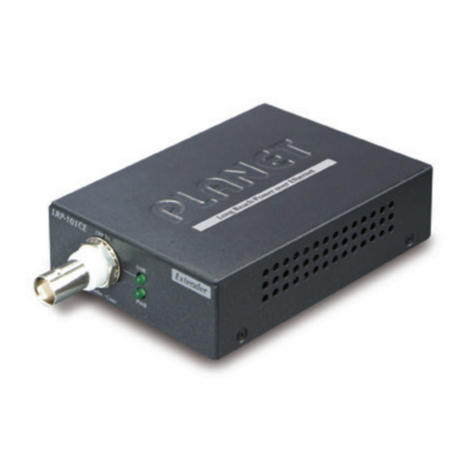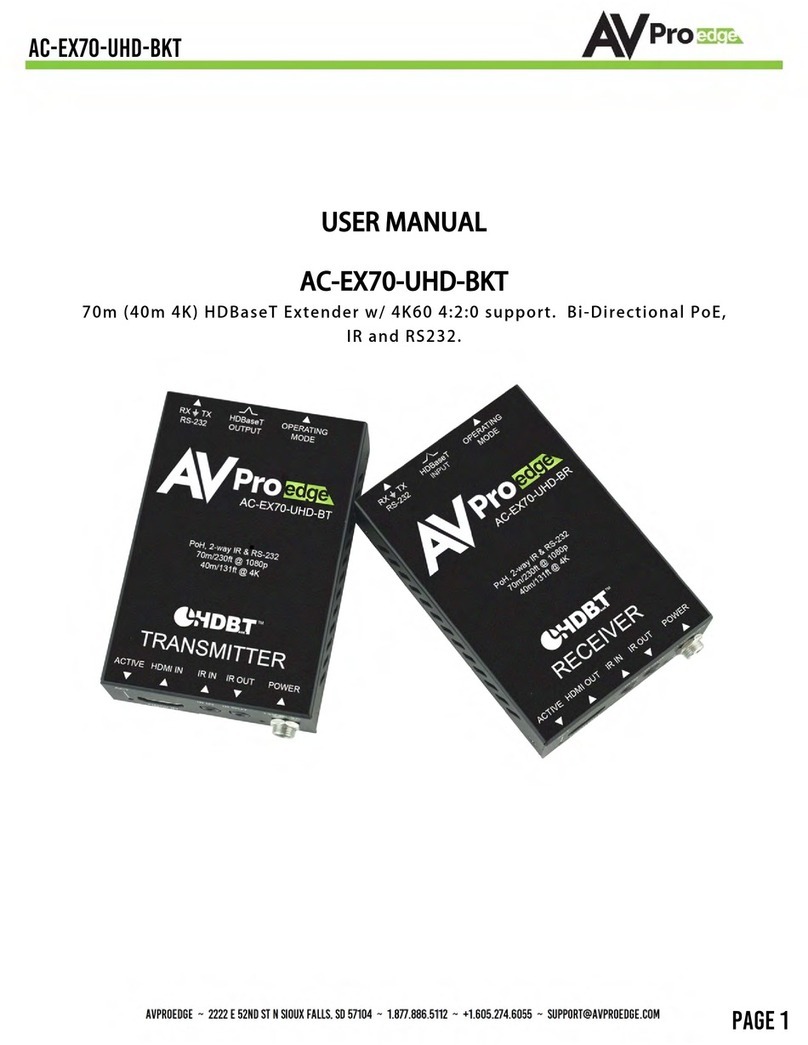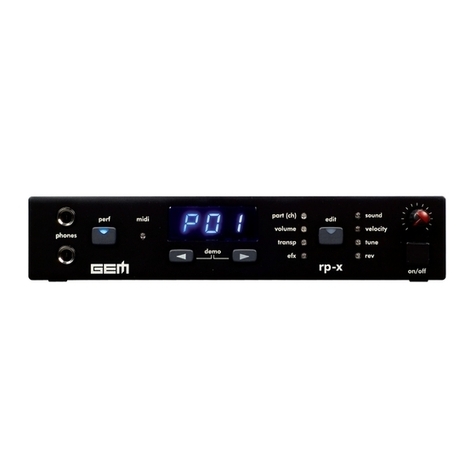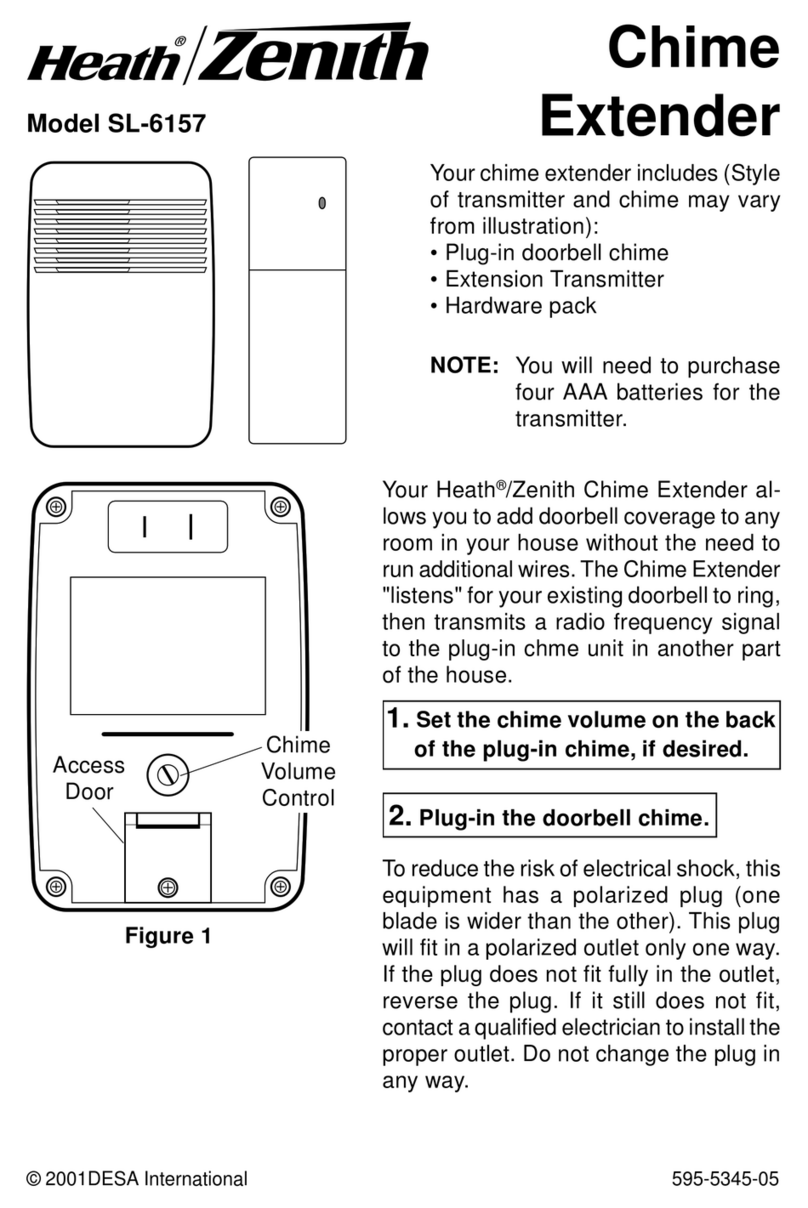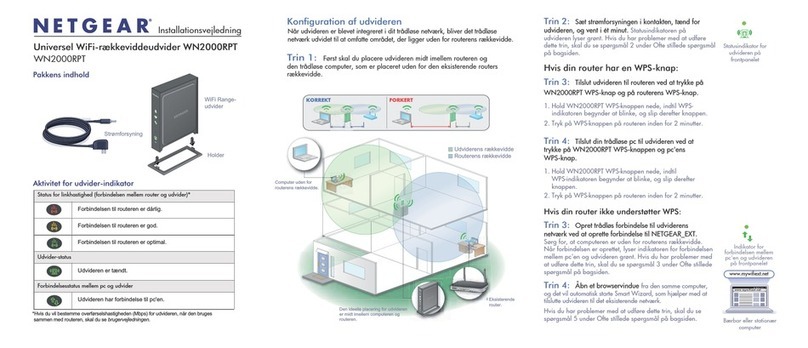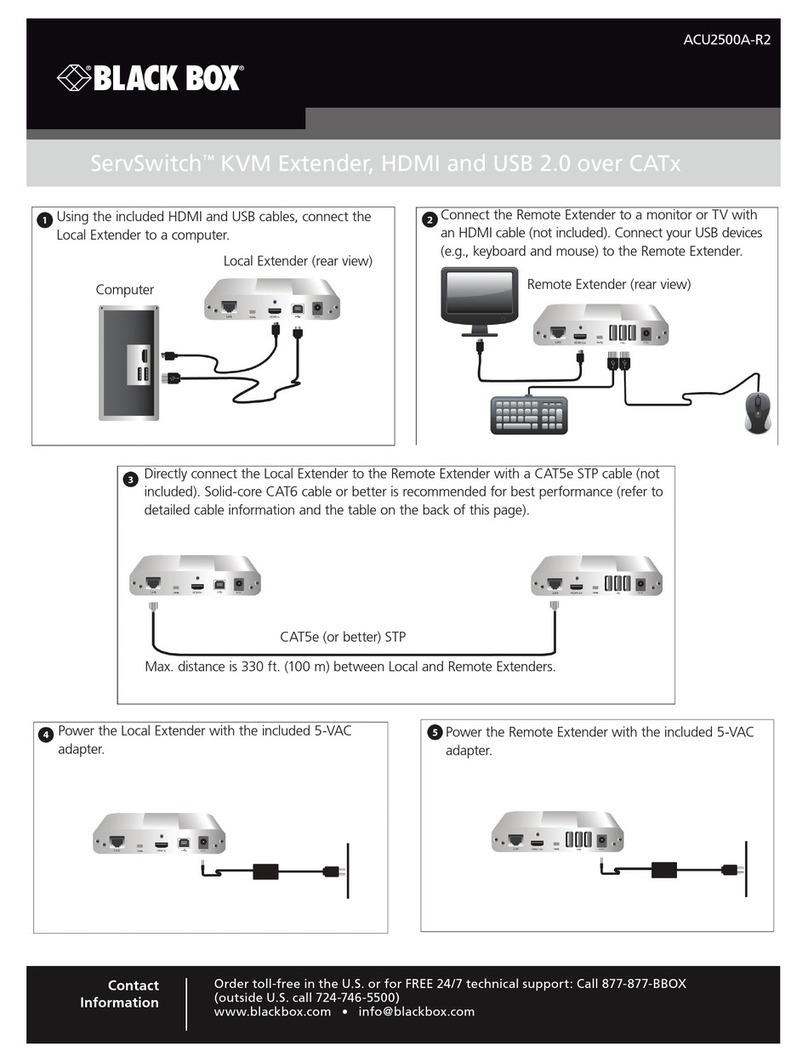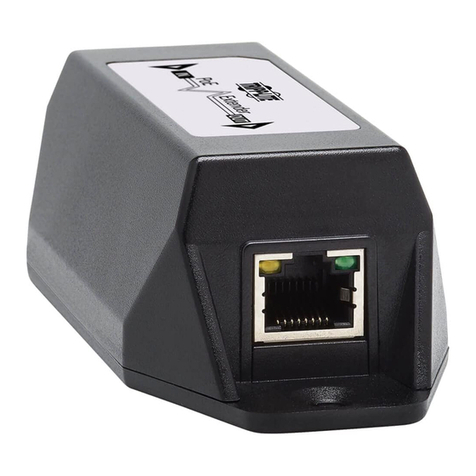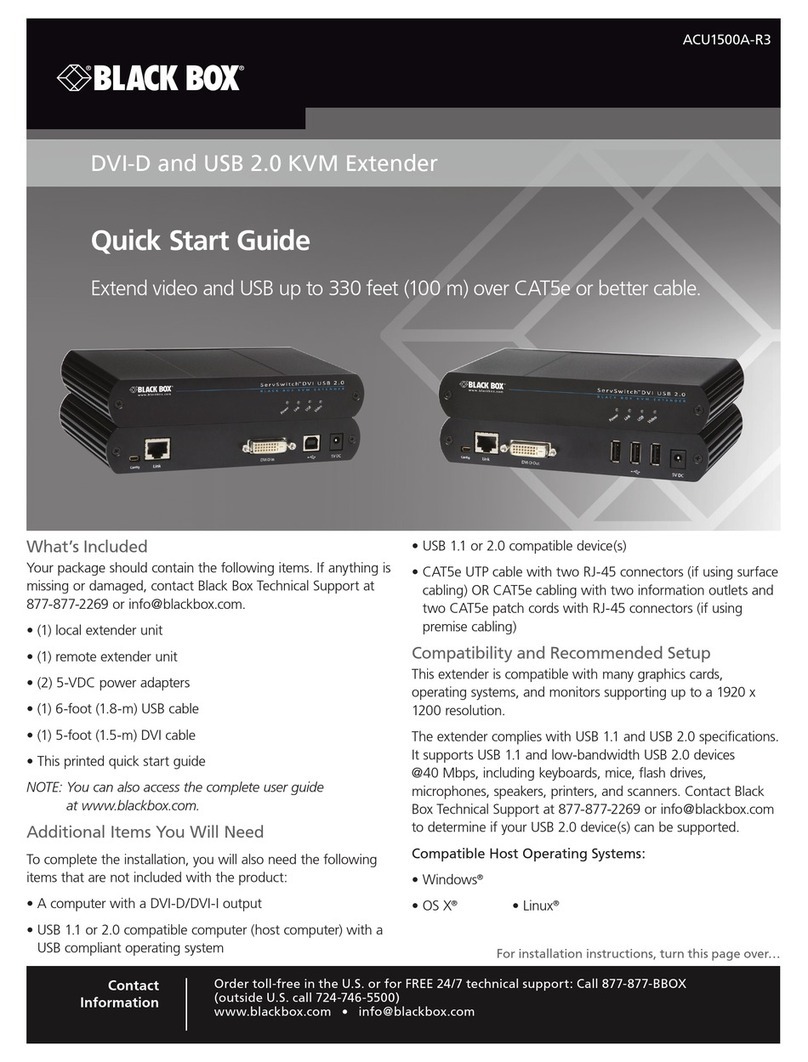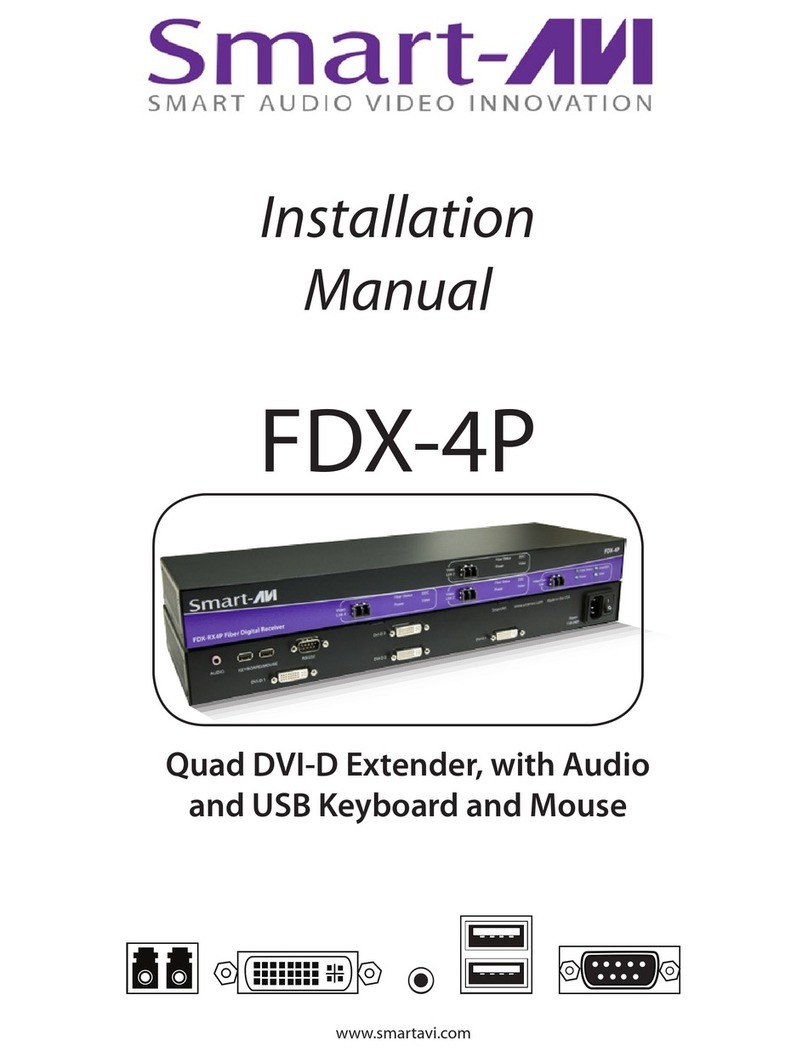NEXTIVITY CEL-FI GO G43 User manual

CEL-FI GO G43 User Manual
For Models:
G43-BBBE
G43-99JE
G43-JJNE

OCT 2023 Page | 2
Contents
1. About this Guide...........................................................................................................................3
2. What’s Included with the CEL-FI GO G43 ....................................................................................4
3. Product Interfaces........................................................................................................................4
4. Typical Installation Overview.......................................................................................................5
5. Installation Prerequisites.............................................................................................................7
6. Installation....................................................................................................................................7
6.1 Step 1: Site Survey..................................................................................................................7
6.2 Step 2: Plan the System .......................................................................................................10
6.3 Step 3: Plan your System Management Method ................................................................13
6.4 Step 4: Install the GO G43 Unit.............................................................................................14
6.5 Step 5: Install the Server Antennas and Coax.....................................................................16
6.6 Step 6: Install the Donor Antennas and Coax .....................................................................16
6.7 Step 7: Connect the Donor Antenna Coaxial Cables to the GO G43..................................18
6.8 Step 8: Power ON the System..............................................................................................19
6.9 Step 9: Commission the System..........................................................................................20
6.10 Step 10: Fine-Tune Donor Antenna Aiming .........................................................................24
7. Helpful Tools and Signal Quality ...............................................................................................27
7.1 COMPASS XR and WAVE PRO App .....................................................................................27
7.2 WAVE Field Tool ...................................................................................................................27
8. Specifications.............................................................................................................................28
9. Trademarks ................................................................................................................................28
10. Warranty & Limitation of Liability ..............................................................................................28
Appendix A –LAN Firewall Requirements.......................................................................................29

OCT 2023 Page | 3
1. About this Guide
This User Manual supports all Nextivity CEL-FI GO G43 hardware versions. Each hardware version
supports different cellular frequency bands and/or configurations as they apply to local regulatory
bodies or customers worldwide. Learn more at https://nextivityinc.com/products/cel-fi-go-g43/
The manual covers planning, installation, and management of the GO G43 system.
For more information about Nextivity cellular and Public Safety hardware and software products,
please visit us at www.nextivityinc.com or ask your local operator or supplier.
CEL-FI GO G43
Safety Precautions
•Use CEL-FI GO G43 indoors. It should not be used outdoors.
•This product is designed to be used with the external AC Adapter that ships with the Unit. When
installing the equipment, all the requirements of the AC Adapter manufacturer and the referenced
standards must be met.
•There are no user-serviceable parts inside.
Note
Changes or modifications to this product not expressly approved by Nextivity may void your right to
operate the equipment.

OCT 2023 Page | 4
2. What’s Included with the CEL-FI GO G43
For more information about the product, Data Sheet, and more, please refer to
https://nextivityinc.com/products/
Review the latest authorized antennas at www.nextivityinc.com/antennas
3. Product Interfaces
GO G43 is a wall mountable unit that has Donor and Server Antenna output ports on the Top of the
unit. The Bottom of the unit has a locking DC Input port for use with the supplied AC Adapter, a LAN
port for Certified Installer WAVE Portal remote management, and Micro-USB ports for local
management with a Window PC and WAVE Field Tool* software.
* At the time of publication, the WAVE Field Tool is undergoing an upgrade. Additional functionality will be released in Q1

OCT 2023 Page | 5
4. Typical Installation Overview
The GO G43 is typically mounted in a Low-Voltage utility room (IDF/MDF). A coaxial cable from
each of the three GO G43 donor ports is connected to a donor antenna on the roof, or another
location where there is a suitable quality donor signal for each operator. The donor ports may be
pre-assigned to three operators, depending on the SKU, and they may be reassigned to the
operators of your choosing using the WAVE Portal, or the WAVE Field Tool windows program
from a PC that may be connected to the GO G43 with a micro-USB cable.
The donor antennas are aimed using the COMPASS XR portable survey tool. Aiming and fine
tuning of antenna directions may also be accomplished by observing RF performance metrics
on the WAVE Portal or WAVE Field Tool.
The GO G43 handles all signal processing and power control functions, and the boosted signals
are fed from the server antenna ports to server antennas in the building using coaxial cable.
More server antennas may be connected using splitters and/or couplers, which is useful for
larger buildings or areas with more walls.

OCT 2023 Page | 6
Donor antennas may be mounted in many ways. The most common is a pole mount, often on a
non-penetrating “skid” that does not penetrate the roof or damage the roof membrane.

OCT 2023 Page | 7
5. Installation Prerequisites
Before starting a project, do the following:
1. If you are a professional installer, make sure you have a WAVE Portal account.
Access to the WAVE Portal is only granted to trained installers that have passed
relevant Nextivity University online courses. Request Portal Access.
2. In order for the GO G43 to connect to the WAVE Portal in the cloud, a LAN connection
must be supplied by the customer according to the firewall requirements in Appendix
A. Normally a Virtual LAN is configured for the GO G43 so it remains separate from
the customer’s network.
3. In the event that a LAN connection cannot be provided, the GO G43 can still be
commissioned using the WAVE Field Tool* software program for Microsoft
Windows. Download the tool at https://nextivityinc.com/software/wavefieldtool/
* At the time of publication, the WAVE Field Tool is undergoing an upgrade. Additional functionality will be released in Q1
6. Installation
Nextivity University has additional courses and information that may be helpful.
6.1 Step 1: Site Survey
Current Service and Needs
Visit the project site and measure current service for each operator. If using a cell phone for each
operator, evaluate service using signal “bars” on test phones. Wi-Fi calling must be disabled.
You can also use the Nextivity COMPASS XR and WAVE Pro App, which are specifically designed
to measure all operator bands and channels at the same time. The WAVE Portal may be used to
quickly generate professional signal reports using uploaded floor plans.

OCT 2023 Page | 8
Do all operators need boosting? If not, then the GO G43 may be assigned to relay one to three
operators as needed.
Do all areas in the building need boosted service? It is best to favor service antennas where service
is needed most, and the customer will know the most important areas.
Where to Install Donor Antennas
This is the most important decision to make when planning. The Donor Antennas should be
installed on the side of the building with the best service quality for each operator (typically a
roof or high up on an exterior wall). This may also be a corner of the building which allows easier
antenna aiming on two sides of the building. If the space to be covered is a suite or floor within a
larger building, where outdoor antennas may not be possible, find the best windows or exterior
rooms with the best service for each operator, and plan to install the donor antennas there (most
likely outward facing panel antennas).
Using COMPASS XR or cell phones for the operators to boost, observe signal “bars” on the
phones while running internet speed tests using the phone’s browser. The speed tests will be the
best indication of donor signal quality.
COMPASS XR
WAVE Pro App
Survey Report

OCT 2023 Page | 9
Later when the donor antennas have been installed, they will be aimed. Make sure that the
antennas will be able to swing across the horizon to candidate cell towers, without obstructions
such as roof equipment or building signage.
If you are a tenant in a larger building, without exterior or roof donor antenna access options,
consider mounting a panel donor antenna on or near a window. Only the GO G43 with its
outstanding Echo Cancelation capability will allow donor and server antennas to be installed this
close together and still achieve full coverage power.

OCT 2023 Page | 10
Where to Install the GO G43 and Run Cables
Also, during the Site Survey decide where the GO G43 will be installed. This is usually on a wall in
a utility or IDF/MDF IT room with either existing roof conduit cable access, or a suitable location
for a roof/exterior penetration for the cables. If outdoor donor antennas are not possible, make
sure that cables may be run to a suitable indoor donor antenna location.
The GO G43 mounting location will also need a suitable power outlet for the unit and have
coaxial cable pathway access to the server antennas that will be installed within the building.
Low-Voltage cable pathways are a good choice, away from power cables.
6.2 Step 2: Plan the System
In the previous step you determined where the GO G43, donor antennas, and cabling will go. You
will now want to select your antennas from the approved list of Nextivity antennas.
http://www.nextivityinc.com/antennas
The GO G43 has three server antenna ports. For a smaller project, usage of a single server port
should be enough. For larger projects, you may use two or all three server ports for more
coverage power. Plan to connect each server port you intend to use to at least one server
antenna, using ½ inch coaxial cable as needed. Thinner cables are more lossy and will reduce
your coverage power.

OCT 2023 Page | 11
Any unused Server Antenna ports should be terminated with a minimum 2-watt N-type (m) 50-
ohm load.
Another example is to connect an antenna directly to a server antenna port on or near the GO
G43 itself, to cover the immediate area around the unit. Then use coaxial cable to connect server
antennas further away into the building.

OCT 2023 Page | 12
A splitter may be used to feed more antennas from each Server Antenna port on the GO G43. If
you want to use more than two server antennas per port, a proper design with Directional
Couplers is recommended. There are many online resources that explain Distributed Antenna
System (DAS) design with splitters, couplers or tappers, to help you get equal power to each
server antenna.
General Server Antenna Rules
Server antennas should always be ceiling mounted in open spaces, where their signals can travel
with the fewest obstructions and walls to the areas needing service. Directional panel antennas
may also be used higher up on walls, to beam into open areas from the side.
If the space to be covered has more walls, plan to use more server antennas (for example, two or
three antennas per server port). Cellular band splitters or couplers are used to divide the power
to more antennas. You can start by spacing the server antennas evenly throughout the building,
and then shift the antennas toward the areas with more walls. Open spaces will not require as
many antennas because there are fewer obstructions to inhibit the signals. You can always move
an antenna later if needed. Shorter coaxial cable routes are best.
Two Server Antenna Ports, each feeding One Antenna

OCT 2023 Page | 13
Two Server Antennas per Server Antenna Port, Using Splitters
More sophisticated planning tools, such as iBwave planning software VEX and template files, are
also available at www.nextivityinc.com
6.3 Step 3: Plan your System Management Method
Providing a LAN connection to the system so you can manage it using the browser accessible
WAVE Portal in the cloud, is highly recommended. The WAVE Portal configures the system and
gives guidance for best performance using data from the actual site. It also maps your systems,
notifies you of alarms, allows software enhancements, and lets you monitor and diagnose issues
or alter settings without the time and expense of a site visit.

OCT 2023 Page | 14
The LAN connection and firewall information is provided in Appendix A of this manual. Give this
information to your customer and request that a properly configured LAN connection is ready on
installation day.
If a LAN connection is not available, you may also use the WAVE Field Tool program. The
program runs on a Windows PC that is connected to the GO G43 using a micro-USB cable. Even
if you do not use the WAVE Field Tool* for settings, it is still a valuable tool resetting a system or
its software, testing the LAN connection, and more.
* At the time of publication, the WAVE Field Tool is undergoing an upgrade. Additional functionality will be released in
Q1 2024. Contact [email protected] with any questions.
6.4 Step 4: Install the GO G43 Unit
The following tools are recommended:
•Power drill/screwdriver
•Drill bit extender (3”+)
•Hammer
•Pencil, or other similar marker
•Level

OCT 2023 Page | 15
Caution
Make sure the area behind any surface is free of electrical wires or other dangerous elements
prior to drilling.
Hold the GO G43 against the wall to mark, drill, and install the supplied wall anchors. The two
upper mounting screw holes are keyed, allowing the screws to be pre-installed and the unit lifted
into place before affixing all four mounting screws.
NOTE: The G43 unit may also be rack mounted if a vented rack shelf if used for proper cooling.
The WAVE Portal constantly monitors unit temperature.

OCT 2023 Page | 16
6.5 Step 5: Install the Server Antennas and Coax
Install the server antennas according to their mounting instructions and install the cables and or
splitters/couplers that will connect them to the GO G43 unit. Observe minimum coax bend radius
and do not run coax along power cables. Shorter cables are best (less loss).
Remember that the server antennas should always be ceiling mounted in open spaces, where
their signals can travel with the fewest obstructions and walls to areas needing service. The
more open the space, the larger the coverage area per antenna.
6.6 Step 6: Install the Donor Antennas and Coax
Donor antennas are the most important item that determines signal health. Take your time. Good
signal in, means good signal out.
Here is a link to if you would like to watch a video about donor antenna best practices.

OCT 2023 Page | 17
If you have a suitable antenna meter to aim the antennas, such as the COMPASS XR, you may
aim the antennas as soon as they are installed. If not, then you will be able to aim the antennas
later using information from the WAVE Portal or WAVE Field Tool.
Tips for Success:
•Use a separate directional donor antenna for each operator, unless antenna aiming
determines that more than one operator’s best signals are coming from the same direction.
Then a single antenna coaxial cable may feed both operator donor inputs on the GO G43
using a splitter.
•Mount the antennas on the side of the building with best service, with an unobstructed view
that allows antenna aiming to one or more cell towers. Move an antenna to a better location
if needed for a healthier signal.
•Do not mount the donor antennas near, or aim the antennas, at other antennas.
•Do not mount the antennas too close to the roof, or where their antenna patterns intersect
with other objects. This is because the true antenna TX/RX pattern is a parabolic region and
NOT what is directly in front of it. Antenna pattern obstructions reduce signal quality.
•Aim each antenna according to the best signal for its operator.
•It is also a good idea to install a grounded lightning arrestor on each antenna coaxial cable,
following the lightning arrestor installation instructions.
•Weatherproof all outdoor cable connections with a suitable self-sealing tape or wrap.
•Always use a Drip Loop where cables enter any device or enclosure.

OCT 2023 Page | 18
6.7 Step 7: Connect the Donor Antenna Coaxial Cables to the GO G43
The donor ports A/B/C on the top of the GO G43 unit may be assigned to individual operators
during the commissioning process.
Your GO G43 model number may support the same bands on each port, or different bands. Refer
to the product information for your GO G43 model number for more information.
Once you know which operators are assigned to which ports A/B/C, you can connect the
appropriate donor antenna coaxial cable to the corresponding port. It may be necessary to gently
tighten the coax connector into the port with a wrench or pliers, so it seats properly. Do not
overtighten or the port may be damaged.

OCT 2023 Page | 19
6.8 Step 8: Power ON the System
If using the WAVE Portal to configure the system, a properly configured LAN cable should be
connected to the GO G43 LAN port at this time (See Appendix A for firewall settings).
Plug the power supply DC cable into the DC power port on the GO G43 and plug the AC Adapter’s
AC Cable into a suitable power outlet. It may be necessary to attach the AC Adapter to the wall
using zip-ties and wall anchors, or other wall attachment method.
The DC power cable connector has a locking collar. The flat part of the connector collar faces
AWAY from the wall (towards the front of the unit). Forcing the connector in backwards may
damage the DC port or connector.
Gently pull the collar to connect or disconnect the cable to the GO G43 power port.

OCT 2023 Page | 20
The GO G43 will power up and you should see LED activity according to the following table:
LED
INDICATION
WHAT IT MEANS
Donor A/B/C Status
LED Off
No power
Blinking Red Orange
Startup sequence
Blinking Green
Wait –Setup in progress
Solid Green
Boosting
Blinking or Solid Red
Needs Commissioning, or there
is an Error –Consult the WAVE
Portal or WAVE Field Tool for
help
Internet Status (icon)
OFF
No internet
Solid Green
Internet idle
Blinking Green
Internet activity
6.9 Step 9: Commission the System
There are two ways to commission the system, using either the WAVE Portal, or the WAVE Field
Tool (Note: this functionality may not be available until Q1 2024.) Operators may be factory
assigned or assigned when commissioning. The GO G43 must have operators assigned to the three
donor ports A/B/C to operate, and these settings may be changed within settings.
WAVE Portal Commissioning Method
If the LAN cable is connected and there is LAN port LED activity, log into the WAVE Portal and
look for the GO G43 Serial Number on the New Systems page.
In order to use the WAVE Portal and related capabilities, you must be registered with the portal
system.
•Request Access to the WAVE Portal
•Log In to the WAVE Portal
This manual suits for next models
3
Table of contents
Other NEXTIVITY Extender manuals
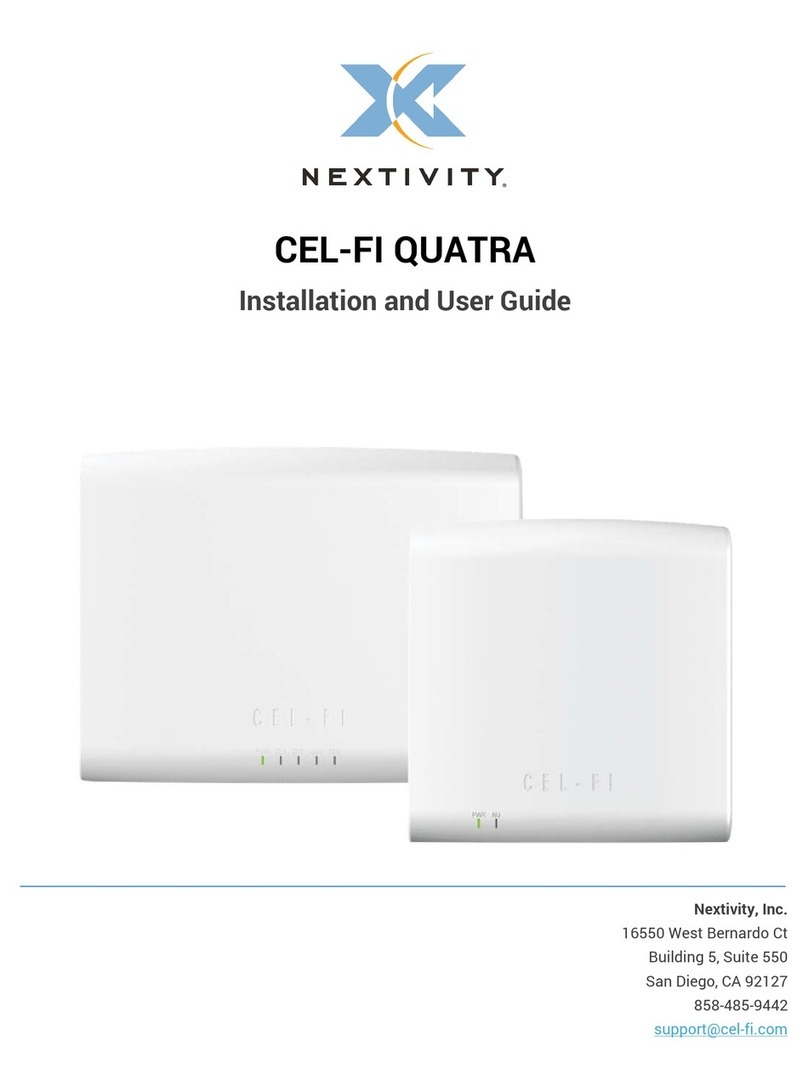
NEXTIVITY
NEXTIVITY Cel-Fi QUATRA User manual
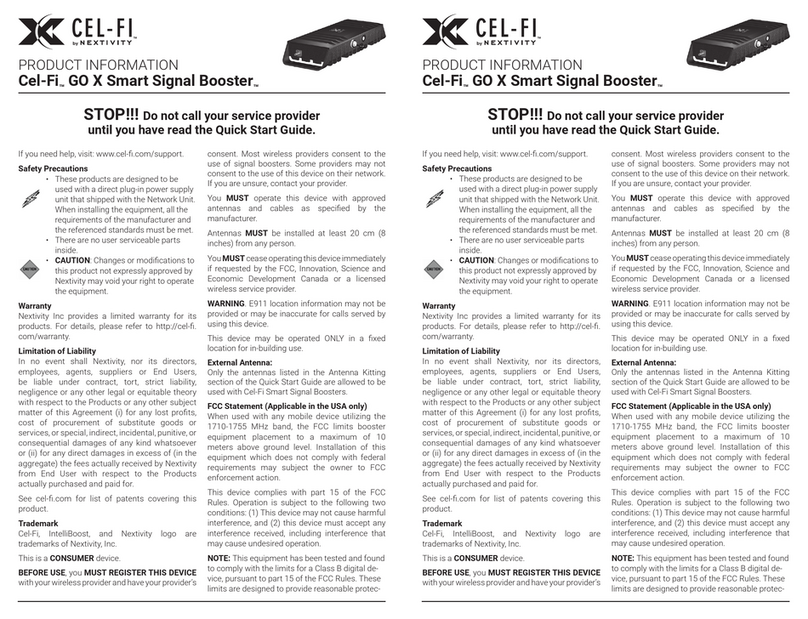
NEXTIVITY
NEXTIVITY Cel-Fi GO X Smart Signal Booster User manual
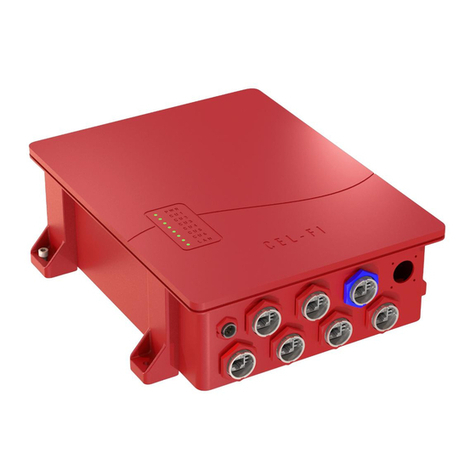
NEXTIVITY
NEXTIVITY Cel-Fi QUATRA RED User manual
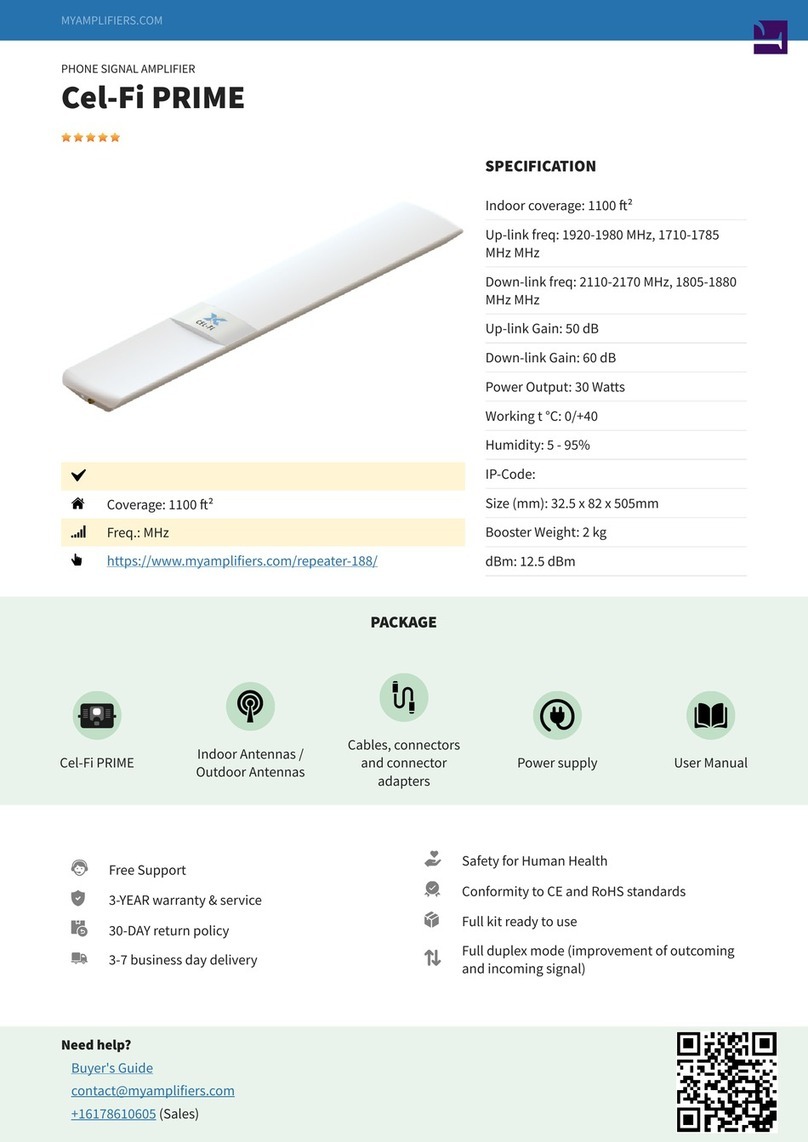
NEXTIVITY
NEXTIVITY Cel-Fi PRIME User manual
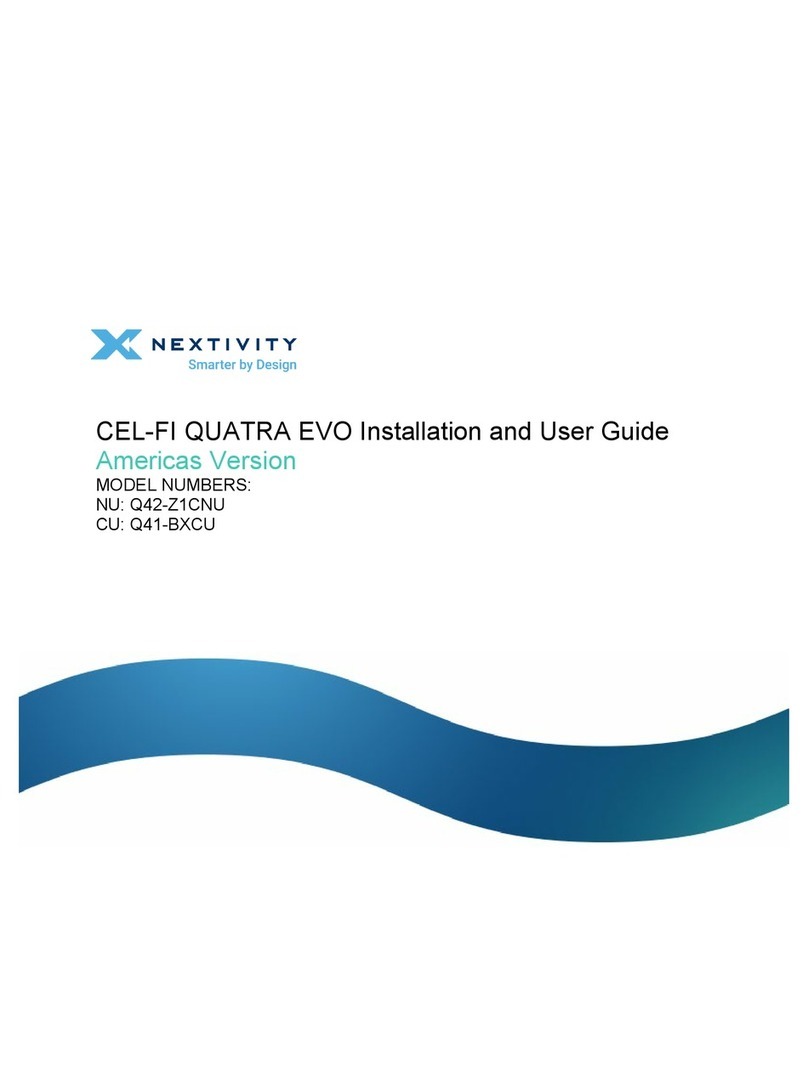
NEXTIVITY
NEXTIVITY CEL-FI QUATRA EVO User manual
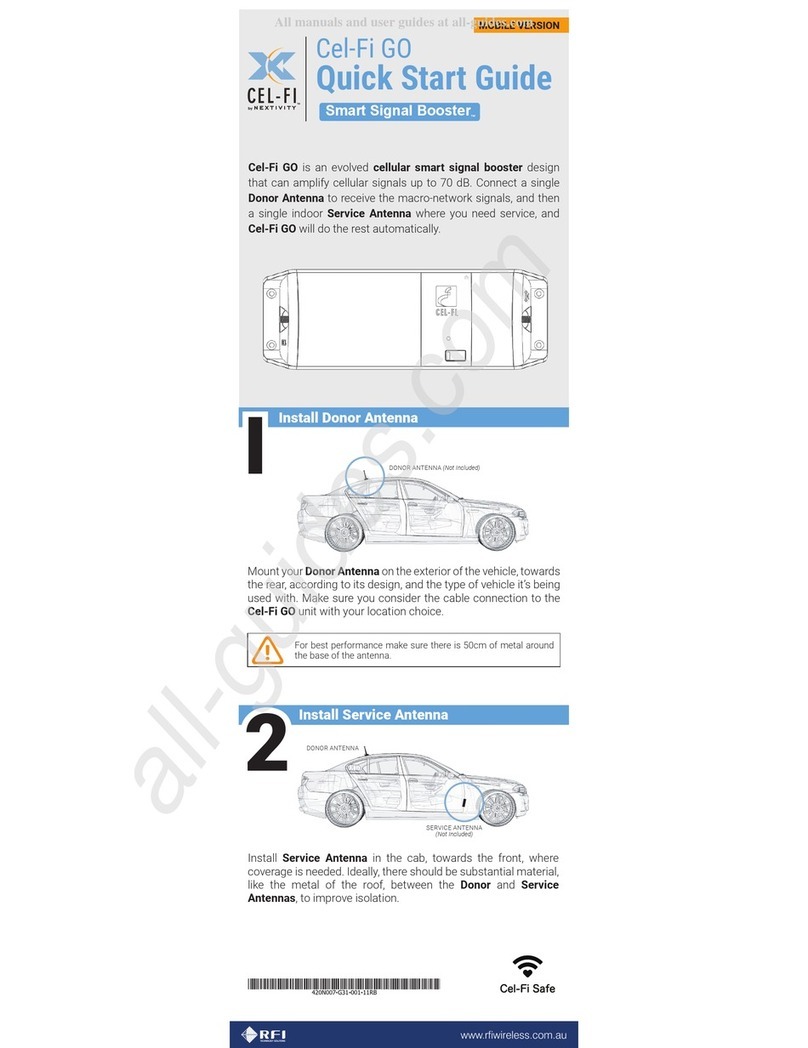
NEXTIVITY
NEXTIVITY Cel-Fi GO User manual

NEXTIVITY
NEXTIVITY Cel-Fi GO+ User manual

